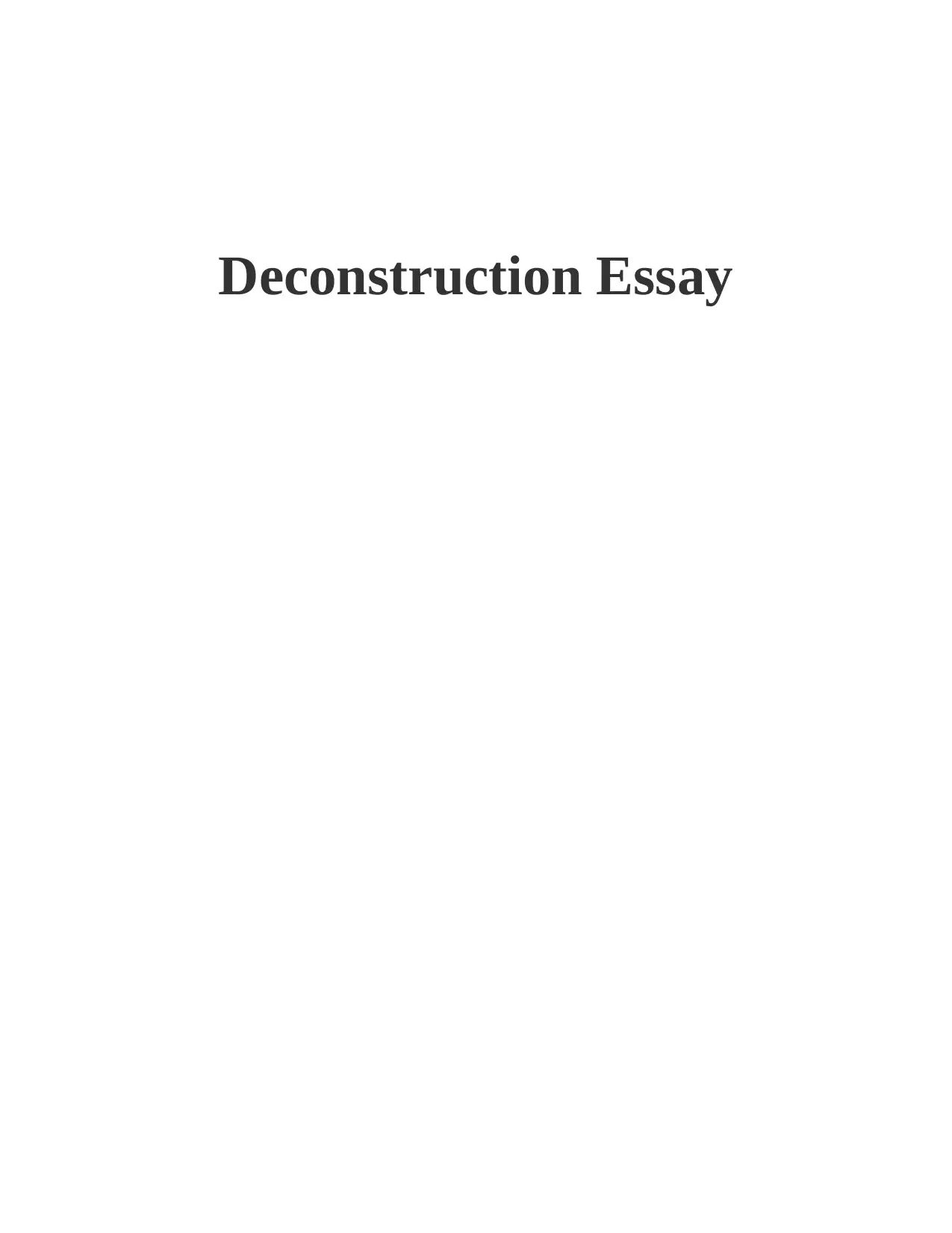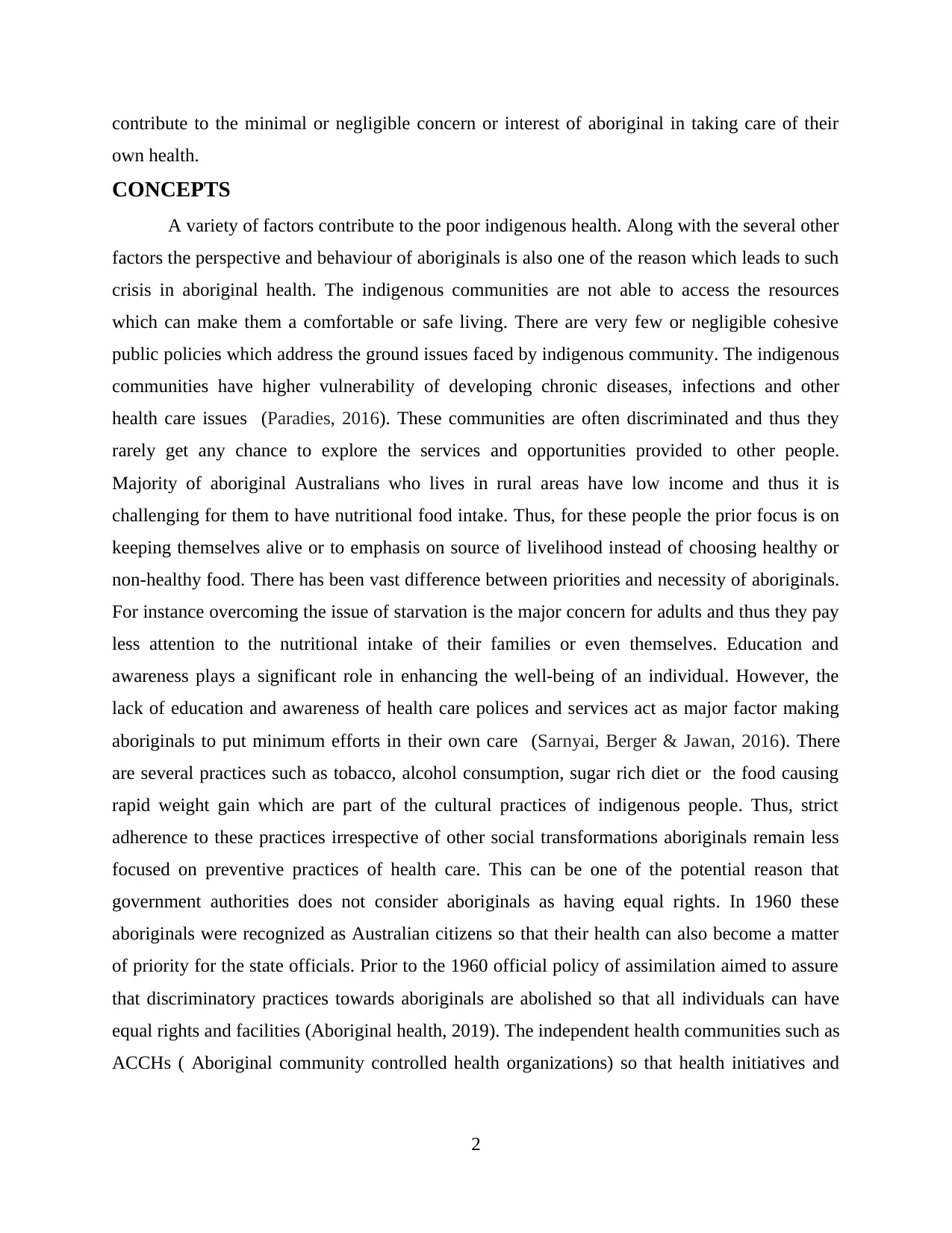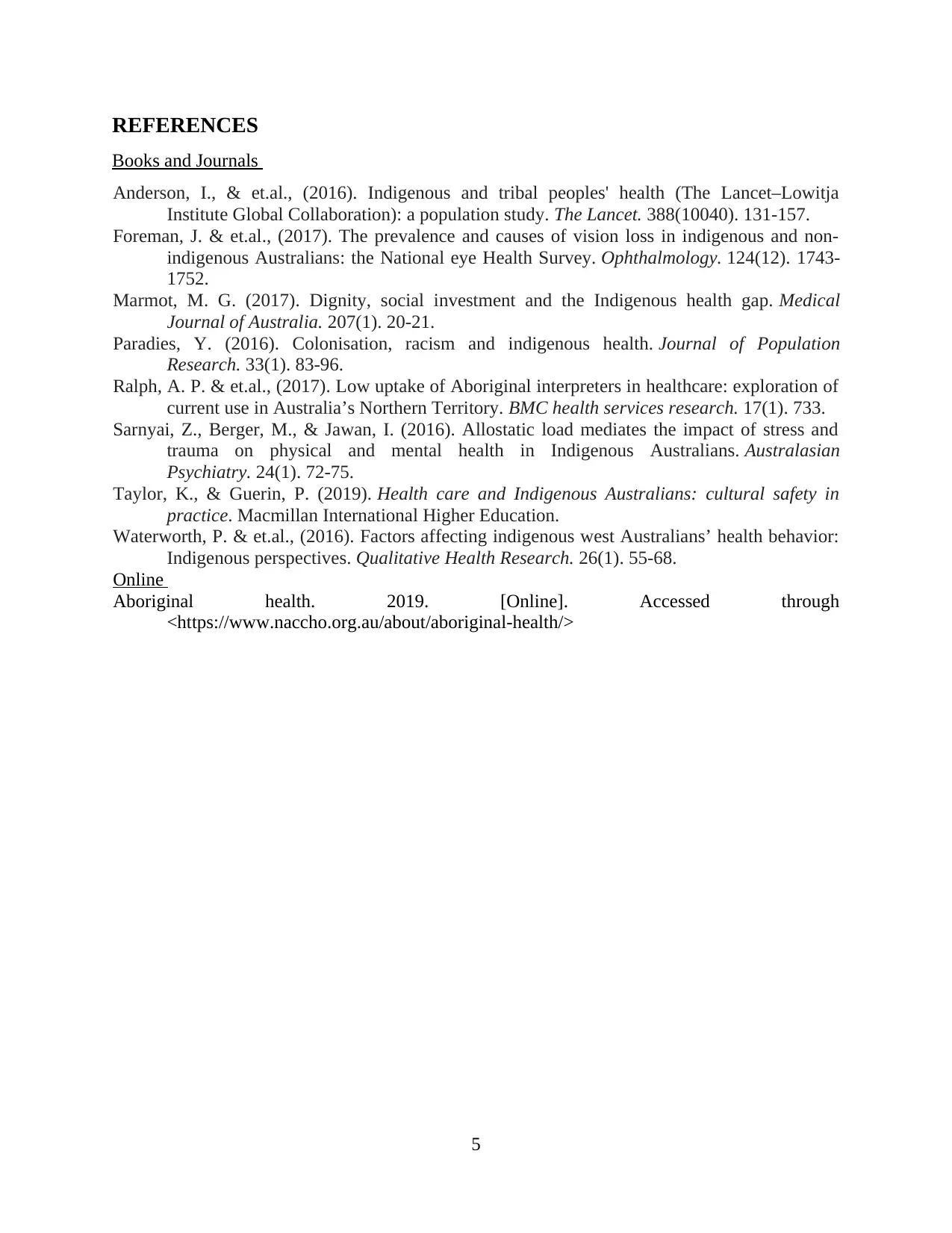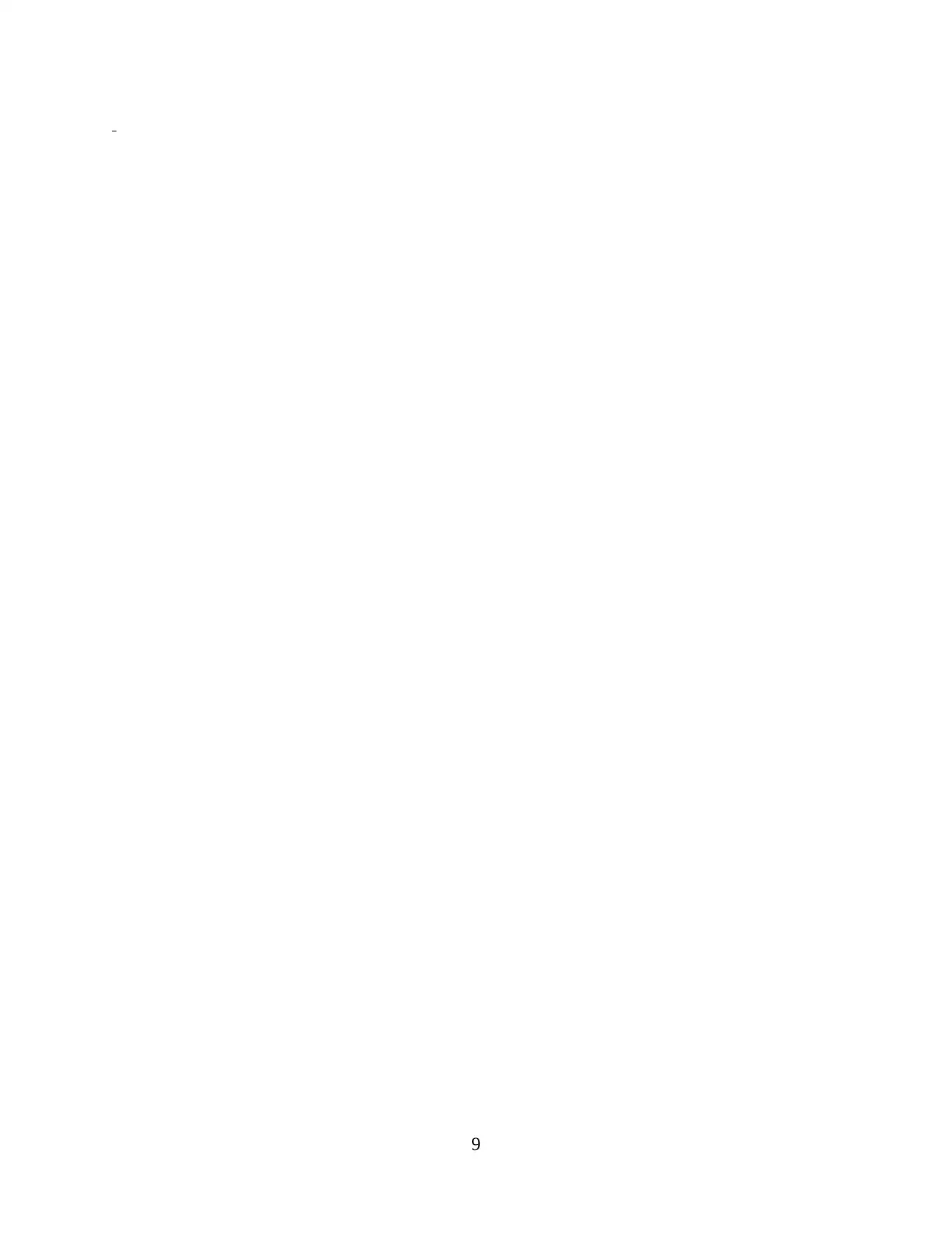Deconstruction Essay on Indigenous Health
VerifiedAdded on 2021/02/20
|12
|1962
|95
AI Summary
Contribute Materials
Your contribution can guide someone’s learning journey. Share your
documents today.

Deconstruction Essay
Secure Best Marks with AI Grader
Need help grading? Try our AI Grader for instant feedback on your assignments.

TABLE OF CONTENTS
INTRODUCTION...........................................................................................................................1
TERMINOLOGIES ........................................................................................................................1
ASSUMPTIONS .............................................................................................................................1
CONCEPTS ....................................................................................................................................2
SYNTHESIS AND STEREOTYPES .............................................................................................3
DISCUSSION AND CONCLUSION ............................................................................................4
REFERENCES ...............................................................................................................................5
INTRODUCTION...........................................................................................................................1
TERMINOLOGIES ........................................................................................................................1
ASSUMPTIONS .............................................................................................................................1
CONCEPTS ....................................................................................................................................2
SYNTHESIS AND STEREOTYPES .............................................................................................3
DISCUSSION AND CONCLUSION ............................................................................................4
REFERENCES ...............................................................................................................................5

INTRODUCTION
Indigenous health is defined as the cultural, social, emotional and physical well-being and
safety of aboriginals or Indigenous Australians. As compare to remaining Australian
communities indigenous people suffer from more health concerns and are often less concerned
regarding the same (Ralph & et.al., 2017). It has been observed that these people show minimal
interest or attempts for their complete well-being. There are several factors which underpin this
attitude of Indigenous Australians. The report will deconstruct the issue so that responsible
factors can be identified and effective strategies can be developed for the cultural and health
safety issues.
TERMINOLOGIES
Aboriginals are defined as the people inhabiting a particular land or region prior to the
arrival of colonists or from the earliest times. These are also known as inhabitants which have
developed across Australia for several years and share complex genetic history (Taylor &
Guerin, 2019). Being the inheritors of the ancient and oldest culture on the planet it is very
essential that along with their traditions, cultural and unique identity their physical and mental
health must be improved so that they can also link with the main stream of society or other
Australians.
ASSUMPTIONS
It has been assumed that aboriginal is strictly bounded with their cultural and social
practices which may not sound appropriate to post-colonial practices or generations. This forms a
strong basis for racial discrimination against aboriginals. It is assumed that in terms of education,
health, employment opportunities and sociocultural structures aboriginals have their own set of
frameworks which are greatly different from the present frameworks of Australian government.
Thus, the community members have strong belief that government, health care communities are
just making policies to abolish their traditional practices, land and other resources. This serves
the prime reason due to which there exists a huge gap between health status of aboriginals.
In addition to this on the basis of education level, wealth and current position in the social
structure health care service providers tend to be less focused and accountable on health
programs or strategies for aboriginals (Waterworth & et.al., 2016). Due to narrow participation
and interaction of aboriginals health professionals and welfare authorities also find it easy to shift
their accountability and responsibility. Thus, it can be analysed that there are several factors
1
Indigenous health is defined as the cultural, social, emotional and physical well-being and
safety of aboriginals or Indigenous Australians. As compare to remaining Australian
communities indigenous people suffer from more health concerns and are often less concerned
regarding the same (Ralph & et.al., 2017). It has been observed that these people show minimal
interest or attempts for their complete well-being. There are several factors which underpin this
attitude of Indigenous Australians. The report will deconstruct the issue so that responsible
factors can be identified and effective strategies can be developed for the cultural and health
safety issues.
TERMINOLOGIES
Aboriginals are defined as the people inhabiting a particular land or region prior to the
arrival of colonists or from the earliest times. These are also known as inhabitants which have
developed across Australia for several years and share complex genetic history (Taylor &
Guerin, 2019). Being the inheritors of the ancient and oldest culture on the planet it is very
essential that along with their traditions, cultural and unique identity their physical and mental
health must be improved so that they can also link with the main stream of society or other
Australians.
ASSUMPTIONS
It has been assumed that aboriginal is strictly bounded with their cultural and social
practices which may not sound appropriate to post-colonial practices or generations. This forms a
strong basis for racial discrimination against aboriginals. It is assumed that in terms of education,
health, employment opportunities and sociocultural structures aboriginals have their own set of
frameworks which are greatly different from the present frameworks of Australian government.
Thus, the community members have strong belief that government, health care communities are
just making policies to abolish their traditional practices, land and other resources. This serves
the prime reason due to which there exists a huge gap between health status of aboriginals.
In addition to this on the basis of education level, wealth and current position in the social
structure health care service providers tend to be less focused and accountable on health
programs or strategies for aboriginals (Waterworth & et.al., 2016). Due to narrow participation
and interaction of aboriginals health professionals and welfare authorities also find it easy to shift
their accountability and responsibility. Thus, it can be analysed that there are several factors
1

contribute to the minimal or negligible concern or interest of aboriginal in taking care of their
own health.
CONCEPTS
A variety of factors contribute to the poor indigenous health. Along with the several other
factors the perspective and behaviour of aboriginals is also one of the reason which leads to such
crisis in aboriginal health. The indigenous communities are not able to access the resources
which can make them a comfortable or safe living. There are very few or negligible cohesive
public policies which address the ground issues faced by indigenous community. The indigenous
communities have higher vulnerability of developing chronic diseases, infections and other
health care issues (Paradies, 2016). These communities are often discriminated and thus they
rarely get any chance to explore the services and opportunities provided to other people.
Majority of aboriginal Australians who lives in rural areas have low income and thus it is
challenging for them to have nutritional food intake. Thus, for these people the prior focus is on
keeping themselves alive or to emphasis on source of livelihood instead of choosing healthy or
non-healthy food. There has been vast difference between priorities and necessity of aboriginals.
For instance overcoming the issue of starvation is the major concern for adults and thus they pay
less attention to the nutritional intake of their families or even themselves. Education and
awareness plays a significant role in enhancing the well-being of an individual. However, the
lack of education and awareness of health care polices and services act as major factor making
aboriginals to put minimum efforts in their own care (Sarnyai, Berger & Jawan, 2016). There
are several practices such as tobacco, alcohol consumption, sugar rich diet or the food causing
rapid weight gain which are part of the cultural practices of indigenous people. Thus, strict
adherence to these practices irrespective of other social transformations aboriginals remain less
focused on preventive practices of health care. This can be one of the potential reason that
government authorities does not consider aboriginals as having equal rights. In 1960 these
aboriginals were recognized as Australian citizens so that their health can also become a matter
of priority for the state officials. Prior to the 1960 official policy of assimilation aimed to assure
that discriminatory practices towards aboriginals are abolished so that all individuals can have
equal rights and facilities (Aboriginal health, 2019). The independent health communities such as
ACCHs ( Aboriginal community controlled health organizations) so that health initiatives and
2
own health.
CONCEPTS
A variety of factors contribute to the poor indigenous health. Along with the several other
factors the perspective and behaviour of aboriginals is also one of the reason which leads to such
crisis in aboriginal health. The indigenous communities are not able to access the resources
which can make them a comfortable or safe living. There are very few or negligible cohesive
public policies which address the ground issues faced by indigenous community. The indigenous
communities have higher vulnerability of developing chronic diseases, infections and other
health care issues (Paradies, 2016). These communities are often discriminated and thus they
rarely get any chance to explore the services and opportunities provided to other people.
Majority of aboriginal Australians who lives in rural areas have low income and thus it is
challenging for them to have nutritional food intake. Thus, for these people the prior focus is on
keeping themselves alive or to emphasis on source of livelihood instead of choosing healthy or
non-healthy food. There has been vast difference between priorities and necessity of aboriginals.
For instance overcoming the issue of starvation is the major concern for adults and thus they pay
less attention to the nutritional intake of their families or even themselves. Education and
awareness plays a significant role in enhancing the well-being of an individual. However, the
lack of education and awareness of health care polices and services act as major factor making
aboriginals to put minimum efforts in their own care (Sarnyai, Berger & Jawan, 2016). There
are several practices such as tobacco, alcohol consumption, sugar rich diet or the food causing
rapid weight gain which are part of the cultural practices of indigenous people. Thus, strict
adherence to these practices irrespective of other social transformations aboriginals remain less
focused on preventive practices of health care. This can be one of the potential reason that
government authorities does not consider aboriginals as having equal rights. In 1960 these
aboriginals were recognized as Australian citizens so that their health can also become a matter
of priority for the state officials. Prior to the 1960 official policy of assimilation aimed to assure
that discriminatory practices towards aboriginals are abolished so that all individuals can have
equal rights and facilities (Aboriginal health, 2019). The independent health communities such as
ACCHs ( Aboriginal community controlled health organizations) so that health initiatives and
2
Secure Best Marks with AI Grader
Need help grading? Try our AI Grader for instant feedback on your assignments.

funding can be managed for aboriginals. However, it seems that these organizations fail to
address the ground level barrier of encouraging equal participation of these people.
SYNTHESIS AND STEREOTYPES
According to Marmot, (2017) it has been analysed that inadequate housing make
indigenous Australians to expose to infection risk and smoke or obesity generated diseases. The
community has higher expenditure and preference of beverages rich in sugar instead of
vegetables of fruit. The same principles and habits are transfer to children and young adults. In
addition to this there is wide gap between parents and children. Thus, from the childhood
individuals are trained to follow practices which leads to enjoyment or the cultural assumptions
instead of correlating them with health outcomes. It develops a habit to neglect the physiological
changes indicating development of disease. The lack of effective communication among
community members or the cross cultural miscommunication often leads to health deteriorations
because individuals are not able to discuss their health concern openly and easily. It encourages
the progression of disease rapidly.
The hesitation can be one of the aspect that most of the people hesitate to receive the
health care services provided by state authority. Aboriginal community members used to believe
that health care service providers or nurses may not deliver the effective and accurate treatment
which is in accordance with their religious, cultural as well as traditional practices. Among
aboriginal there are several popular stereotypes which influences the behaviour and practices of
community members (Foreman & et.al., 2017). For example the alcohol and drug addiction,
violence and heavy smoking are very common practices among people. It is assumed that the
dominating members of the community particularly males are authorized and supposed to follow
these practices as matter of pride and tradition.
Thus, despite having adverse health impact the health concerns are neglected and less
emphasis is given to healthy living. Contrary to other Australians aboriginals tends to face more
discrimination and thus their health issues are never a matter of concern for themselves and their
family members. The same stereotype continues and it develops a trend and habit for the women
to give their health the least priority. There is wide gap between thinking, practices and social
approaches of aboriginals and other community groups. From the long term it is strongly
3
address the ground level barrier of encouraging equal participation of these people.
SYNTHESIS AND STEREOTYPES
According to Marmot, (2017) it has been analysed that inadequate housing make
indigenous Australians to expose to infection risk and smoke or obesity generated diseases. The
community has higher expenditure and preference of beverages rich in sugar instead of
vegetables of fruit. The same principles and habits are transfer to children and young adults. In
addition to this there is wide gap between parents and children. Thus, from the childhood
individuals are trained to follow practices which leads to enjoyment or the cultural assumptions
instead of correlating them with health outcomes. It develops a habit to neglect the physiological
changes indicating development of disease. The lack of effective communication among
community members or the cross cultural miscommunication often leads to health deteriorations
because individuals are not able to discuss their health concern openly and easily. It encourages
the progression of disease rapidly.
The hesitation can be one of the aspect that most of the people hesitate to receive the
health care services provided by state authority. Aboriginal community members used to believe
that health care service providers or nurses may not deliver the effective and accurate treatment
which is in accordance with their religious, cultural as well as traditional practices. Among
aboriginal there are several popular stereotypes which influences the behaviour and practices of
community members (Foreman & et.al., 2017). For example the alcohol and drug addiction,
violence and heavy smoking are very common practices among people. It is assumed that the
dominating members of the community particularly males are authorized and supposed to follow
these practices as matter of pride and tradition.
Thus, despite having adverse health impact the health concerns are neglected and less
emphasis is given to healthy living. Contrary to other Australians aboriginals tends to face more
discrimination and thus their health issues are never a matter of concern for themselves and their
family members. The same stereotype continues and it develops a trend and habit for the women
to give their health the least priority. There is wide gap between thinking, practices and social
approaches of aboriginals and other community groups. From the long term it is strongly
3

believed by aboriginals that government officials and other social communities tend to acquire or
capture their resources.
The government polices of gender equality, education, health, law and order is a threat to
the native and ancient values of aboriginals (Anderson & et.al., 2016). On the same side it is also
assumed for the aboriginals that they are involved in criminal activities and thus they must not be
given equal opportunities and rights as given to mainstream. This stereotype leads to a
communication as well as collaboration gap between both the groups. As a result aboriginals find
it less appropriate to adopt health policies constructed by government. Similarly, the service
providers also give less emphasis and attention to the concerns of aboriginals. This gradually
develops the tendency to cause poor indigenous health outcomes.
DISCUSSION AND CONCLUSION
It can be concluded that the most dominating factor influencing the self care and
management approach among aboriginals is the lack of education and awareness. There has been
rising concern over the equality rights and health care needs of aboriginals but still state
authorities must encourage events so that they can be integrated and developed with other
developed communities as well. It is recommended that the government must incorporate the
cultural practices or trends into health care system. For instance the same attempts are being
made by the authorities in South Australia where traditional healers works in collaboration with
the hospitals. This approach motivates aboriginals to easily enquire health practices or their
concerns. It can also be a critical strategy to contribute self motivation among indigenous people.
It has been also analysed that for enhancing the concern and health awareness necessary
health care services, accommodation facilities, education, financial support and health assistance
must be provided to aboriginal people. The lack of confidence and an equal status in the social
infrastructure also puts the discriminatory practices against aboriginals. Such discrimination has
adverse impact upon psychological well-being of individuals and instead of prioritizing care
needs they pay attention for social justice and other elementary needs.
4
capture their resources.
The government polices of gender equality, education, health, law and order is a threat to
the native and ancient values of aboriginals (Anderson & et.al., 2016). On the same side it is also
assumed for the aboriginals that they are involved in criminal activities and thus they must not be
given equal opportunities and rights as given to mainstream. This stereotype leads to a
communication as well as collaboration gap between both the groups. As a result aboriginals find
it less appropriate to adopt health policies constructed by government. Similarly, the service
providers also give less emphasis and attention to the concerns of aboriginals. This gradually
develops the tendency to cause poor indigenous health outcomes.
DISCUSSION AND CONCLUSION
It can be concluded that the most dominating factor influencing the self care and
management approach among aboriginals is the lack of education and awareness. There has been
rising concern over the equality rights and health care needs of aboriginals but still state
authorities must encourage events so that they can be integrated and developed with other
developed communities as well. It is recommended that the government must incorporate the
cultural practices or trends into health care system. For instance the same attempts are being
made by the authorities in South Australia where traditional healers works in collaboration with
the hospitals. This approach motivates aboriginals to easily enquire health practices or their
concerns. It can also be a critical strategy to contribute self motivation among indigenous people.
It has been also analysed that for enhancing the concern and health awareness necessary
health care services, accommodation facilities, education, financial support and health assistance
must be provided to aboriginal people. The lack of confidence and an equal status in the social
infrastructure also puts the discriminatory practices against aboriginals. Such discrimination has
adverse impact upon psychological well-being of individuals and instead of prioritizing care
needs they pay attention for social justice and other elementary needs.
4

REFERENCES
Books and Journals
Anderson, I., & et.al., (2016). Indigenous and tribal peoples' health (The Lancet–Lowitja
Institute Global Collaboration): a population study. The Lancet. 388(10040). 131-157.
Foreman, J. & et.al., (2017). The prevalence and causes of vision loss in indigenous and non-
indigenous Australians: the National eye Health Survey. Ophthalmology. 124(12). 1743-
1752.
Marmot, M. G. (2017). Dignity, social investment and the Indigenous health gap. Medical
Journal of Australia. 207(1). 20-21.
Paradies, Y. (2016). Colonisation, racism and indigenous health. Journal of Population
Research. 33(1). 83-96.
Ralph, A. P. & et.al., (2017). Low uptake of Aboriginal interpreters in healthcare: exploration of
current use in Australia’s Northern Territory. BMC health services research. 17(1). 733.
Sarnyai, Z., Berger, M., & Jawan, I. (2016). Allostatic load mediates the impact of stress and
trauma on physical and mental health in Indigenous Australians. Australasian
Psychiatry. 24(1). 72-75.
Taylor, K., & Guerin, P. (2019). Health care and Indigenous Australians: cultural safety in
practice. Macmillan International Higher Education.
Waterworth, P. & et.al., (2016). Factors affecting indigenous west Australians’ health behavior:
Indigenous perspectives. Qualitative Health Research. 26(1). 55-68.
Online
Aboriginal health. 2019. [Online]. Accessed through
<https://www.naccho.org.au/about/aboriginal-health/>
5
Books and Journals
Anderson, I., & et.al., (2016). Indigenous and tribal peoples' health (The Lancet–Lowitja
Institute Global Collaboration): a population study. The Lancet. 388(10040). 131-157.
Foreman, J. & et.al., (2017). The prevalence and causes of vision loss in indigenous and non-
indigenous Australians: the National eye Health Survey. Ophthalmology. 124(12). 1743-
1752.
Marmot, M. G. (2017). Dignity, social investment and the Indigenous health gap. Medical
Journal of Australia. 207(1). 20-21.
Paradies, Y. (2016). Colonisation, racism and indigenous health. Journal of Population
Research. 33(1). 83-96.
Ralph, A. P. & et.al., (2017). Low uptake of Aboriginal interpreters in healthcare: exploration of
current use in Australia’s Northern Territory. BMC health services research. 17(1). 733.
Sarnyai, Z., Berger, M., & Jawan, I. (2016). Allostatic load mediates the impact of stress and
trauma on physical and mental health in Indigenous Australians. Australasian
Psychiatry. 24(1). 72-75.
Taylor, K., & Guerin, P. (2019). Health care and Indigenous Australians: cultural safety in
practice. Macmillan International Higher Education.
Waterworth, P. & et.al., (2016). Factors affecting indigenous west Australians’ health behavior:
Indigenous perspectives. Qualitative Health Research. 26(1). 55-68.
Online
Aboriginal health. 2019. [Online]. Accessed through
<https://www.naccho.org.au/about/aboriginal-health/>
5
Paraphrase This Document
Need a fresh take? Get an instant paraphrase of this document with our AI Paraphraser

6

7

8
Secure Best Marks with AI Grader
Need help grading? Try our AI Grader for instant feedback on your assignments.

9

10
1 out of 12
Related Documents
Your All-in-One AI-Powered Toolkit for Academic Success.
+13062052269
info@desklib.com
Available 24*7 on WhatsApp / Email
![[object Object]](/_next/static/media/star-bottom.7253800d.svg)
Unlock your academic potential
© 2024 | Zucol Services PVT LTD | All rights reserved.





